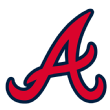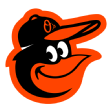In 2017, a lot of the teams everyone expected to be top teams went on to unsurprisingly win their divisions. Nobody looked at the Dodgers-Astros World Series and rhetorically asked, "Who woulda thunk it?" But teams such as the Diamondbacks, Rockies and Twins were surprises for many, and those stories tend to be the most fun.
So, who are 2018's stealth contenders who can go on a deep run into playoff contention if enough realistic things go right? I'm not talking about teams we're certain will be good; if we know it's coming, it's not exactly that stealthy, is it? Who could be 2018's version of the Twins?
No team in baseball reminds me of the Twins the way the Philadelphia Phillies do. They're not all the way through their rebuild, but like the Twins, you see some of the key building blocks for the next five years or so -- players such as Aaron Nola, Rhys Hoskins, and Odubel Herrera. The talent pipeline also has guys on the way, such as J.P. Crawford and Scott Kingery, who could join them easily.
One thing to remember about the Twins is that while they were a surprise based on 2016 performance, it wasn't the craziest, best surprise ever. Their ZiPS projection of 78 wins coming into the 2017 season (with a playoff shot of 15.6 percent) was lower than their final victory total by seven wins, but even that projection represented a 19-game projected improvement from the previous season. The 2016 Twins were a 59-103 team that could be good, and while their division was weak, even a pessimist can't say the Twins weren't a .500ish team in 2017.
Early in the season, some inevitably saw the 2017 Phillies as a disappointment. But you won't get the ending if you don't know the story, and the 2017 team wasn't one that was slumping from a promising 2016. In fact, the team had put up a Pythagorean expected record that was 10 games better than the 2016 team did. But now that they've added Carlos Santana, ZiPS has the Phillies projected up nearly to .500 with a roughly 25 percent chance of making the playoffs, depending on the exact assumptions in playing time.
Is it time for them to start trading guys for Manny Machado? Not really, but the time to make those big signings is coming. The Phillies have mostly rejected opportunities to spend money on middling veteran talent to "help" the rebuilding process, but as the team starts to look a bit like the 2014 Cubs or Astros, it is in an enviable payroll situation. Even with Carlos Santana, Pat Neshek and Tommy Hunter added, Baseball-Reference.com estimates that the Phillies' current payroll number, including arbitration awards and league minimums for players with little service time, is about $66 million. Imagine the Phillies going .500 (or better) with that payroll while being in the initial years of their 25-year, $2.5 billion television deal. The team has the ability to add $100 million to the payroll without breaking a sweat.
The 2018 season could be the surprise year that puts the Phillies' rebuild over-the-top and moves them on to the next phase.
The Nationals might have the best-timed divisional success window in history, hitting their peak win totals during seasons in which two of their four competitors are fully rebuilding and the other two are busy with their own self-destruction. With the Phillies listed above and now the Atlanta Braves ranking right after Philadelphia among my stealth picks, if the Nationals lose Bryce Harper and Anthony Rendon the next couple of years, their end as easy favorites in the NL East might come quickly.
While Atlanta always made more noise about trying to win quickly than the Phillies have, most of the puzzling things the team has done, such as acquiring Matt Kemp, did not cost the team actual talent, just money. Like the 2016 Phillies, Atlanta's brief flirtation with .500 was a mirage, but the team, now with a fully modernized front office run by Alex Anthopoulos, will finally start to see the minor league system make them a real contender.
Will that be 2018? Maybe, maybe not, but the pieces are there. It would be a major surprise if Dansby Swanson didn't crush his 2017 performance. ZiPS projects 3.0-plus WAR in a full season of Ozzie Albies and another 2.0-plus from rookie outfielder Ronald Acuna (which is an amazing projection for the a 20-year-old). ZiPS also sees pitchers such as Kolby Allard and Luiz Gohara (among many others) with a high probability of success very quickly.
The particularly shrewd Matt Kemp trade also gives the team a bit of a boost for 2018. In return for helping the Dodgers structure their payroll to get under the luxury tax, the Braves picked up Brandon McCarthy and Scott Kazmir, who could very easily, in an optimistic scenario, fill out the middle of Atlanta's rotation with league-average pitching. In that sunnier scenario and combined with the prospects, the Braves could have four or even five pitchers capable of delivering 2.0 WAR seasons in 2018, where the only had one (R.A. Dickey) in 2017 by Baseball-Reference's reckoning.
Are the Braves being a contender in 2018 their average outlook? Nope. But the basic parts of a Cinderella season are in place, there's just some assembly required.
Has the Reds' rebuild gone as swimmingly as it could have? Probably not, because they waited far too long to trade players such as Todd Frazier and Aroldis Chapman, and some of the better prospects received -- Jose Peraza and Dilson Herrera -- have been injured and/or simply unproductive.
But the Reds have had success with the players they've picked up and the ones in the draft, and they already had an offense that was on the edge of being competitive in 2018. The gaping hole that kept the team under 70 wins wasn't the lineup, but a disaster of a starting rotation, a unit that went into 2017 with no expectations yet still managed to fall short of them. Thirty pitchers saw time with the Reds in 2017 (not counting second baseman Scooter Gennett's brief cameo), and 15 of them put up negative WAR numbers, totaling minus-7.5 WAR as a staff.
Remember, replacement level for a team was set by Baseball-Reference and FanGraphs in a sabermetric Yalta Conference at 47.7 wins (making 1000 of them available per season). So half the pitchers the Reds used in 2017 performed worse than what you'd expect from the average player on a 48-114 team. These weren't all players with fringe numbers of innings, either, as the below-replacement half of the pitching staff started 96 of the team's 162 games.
It might not sound like it, but this is actually the most depressing good news you'll hear today. One of the characteristics that binds many of the teams with surprising years is that, rather than being mediocre all-around, they were adequate in some areas but absolutely horrible elsewhere. A team of mediocrity is hard to upgrade, but when you employed below-replacement players, it doesn't take nearly as much to pump up the win totals with a few improvements.
And there is improvement on the horizon. The team received only 13 innings in 2017 from Anthony DeSclafani and Brandon Finnegan, who were expected to play key roles for the team. Luis Castillo, who was such a steal from the Marlins that a grand jury should be indicting the Reds for grand theft hurler, should also get a full season in the majors. You won't confuse this rotation with Houston's, but those three provide a much firmer foundation than the team has had at some time, providing a launchpad for the other good things that could happen.
What are these good things? Tyler Mahler is a solid prospect and didn't embarrass himself in his 2017 cameo like most Reds pitching, and ZiPS projects both him and Sal Romano to be right around league-average. ZiPS isn't a fan of Robert Stephenson given his history, but upon being inserted into the rotation in August, he had a better-than-average Bill James Game Score in seven of his eight starts, allowing more than two earned runs in a single turn only against the Cardinals. Pitchers are funny and sometimes develop in unexpected ways. Even Homer Bailey had a few promising starts at the end of the season.
Unlike the other teams on this list, the Baltimore Orioles are not a rebuilding team trying to get over that hump. Baltimore is a team that has a bleak future, with their best player, Manny Machado, a year away from free agency, scant starting pitching after Dylan Bundy and Kevin Gausman, a farm system that has been bottom-tier for years and a front office and ownership that has done little to change any of these facts.
For all the team's long-term problems, there's still enough talent in the short term for the team to make one last run at the playoffs. Remember, they were 89-73 in 2016. The offense was eighth in the AL in 2017, but they also had more players underperforming than overperforming. Chris Davis and Mark Trumbo have huge flaws in their games, but they also ought to do better than the OPS+ numbers of 95 and 83 they put up respectively in 2017. With some kind of bounce-back from these two and the seasons both Jonathan Schoop and Trey Mancini put up representing real improvement, Baltimore is back to having a top-five offense in the AL. The bullpen will still be fine without Zach Britton early on, just as they were in 2017, with the relief corps being the only area on the team that doesn't have the depth of a paper cut.
The rotation remains the big question, but like the Reds, some of the performances they received last season were so awful that simply swapping in merely bad pitching represents a significant improvement. Wade Miley, Ubaldo Jimenez, Chris Tillman and Jeremy Hellickson were all starters who have shown real value at times, but they collected 86 starts in 2017, combining for a 6.68 ERA and minus-4.7 WAR. If the Orioles could simply add a mediocre starter or two and finally get Bundy and Gausman to match their potentials for entire seasons rather than halves, the O's can add a shockingly large number of wins, enough to make the team look a lot like their 2016 performance. The abyss is coming, but it might not be quite here.




